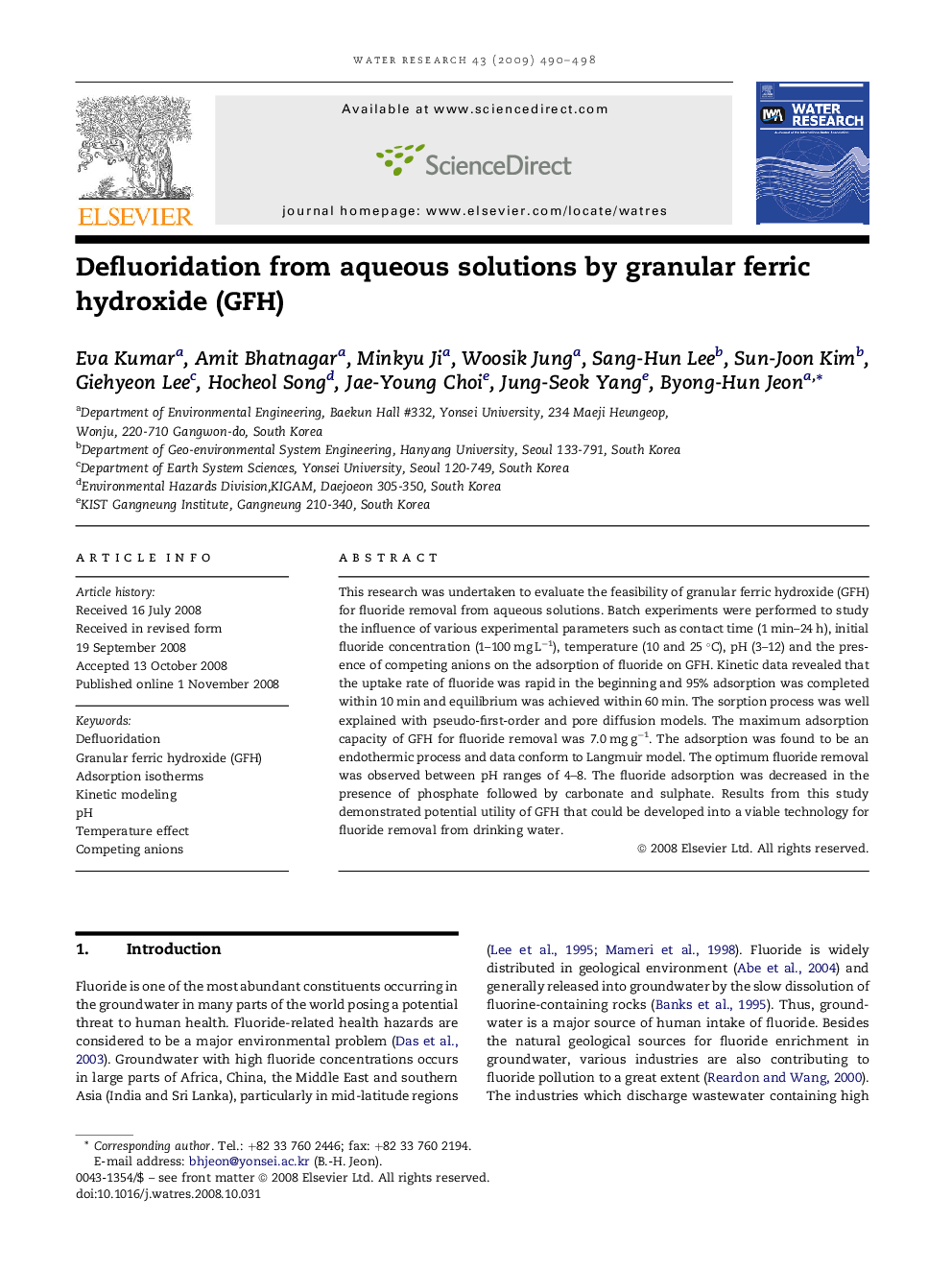| Article ID | Journal | Published Year | Pages | File Type |
|---|---|---|---|---|
| 4484449 | Water Research | 2009 | 9 Pages |
This research was undertaken to evaluate the feasibility of granular ferric hydroxide (GFH) for fluoride removal from aqueous solutions. Batch experiments were performed to study the influence of various experimental parameters such as contact time (1 min–24 h), initial fluoride concentration (1–100 mg L−1), temperature (10 and 25 °C), pH (3–12) and the presence of competing anions on the adsorption of fluoride on GFH. Kinetic data revealed that the uptake rate of fluoride was rapid in the beginning and 95% adsorption was completed within 10 min and equilibrium was achieved within 60 min. The sorption process was well explained with pseudo-first-order and pore diffusion models. The maximum adsorption capacity of GFH for fluoride removal was 7.0 mg g−1. The adsorption was found to be an endothermic process and data conform to Langmuir model. The optimum fluoride removal was observed between pH ranges of 4–8. The fluoride adsorption was decreased in the presence of phosphate followed by carbonate and sulphate. Results from this study demonstrated potential utility of GFH that could be developed into a viable technology for fluoride removal from drinking water.
